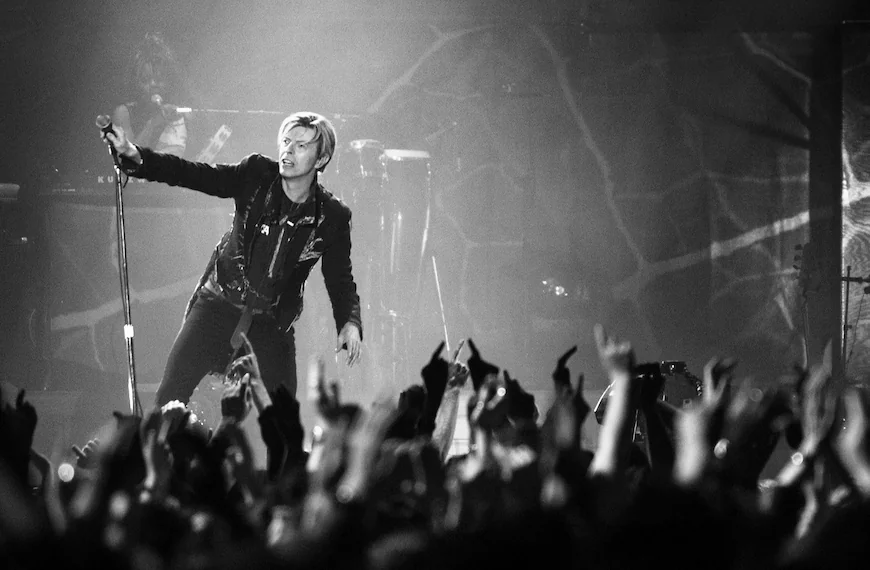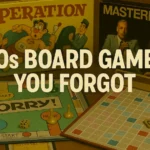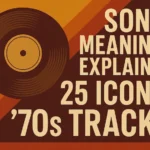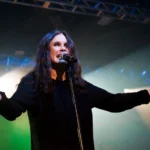The Bee Gees: Barry, Robin, and Maurice Gibb crafted a musical story so wide-ranging that it spans gentle Sixties ballads, stadium-sized Seventies disco, and timeless songwriting for other artists. Few groups reinvented themselves with more flair. They sold more than 220 million records, wrote dozens of chart-toppers, and lifted a film soundtrack (Saturday Night Fever) that came to define an entire cultural moment.
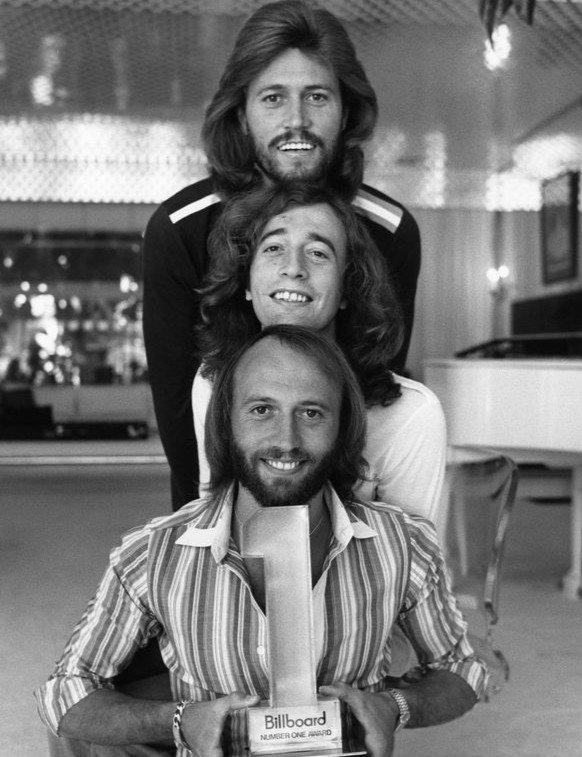
Early Years: From Redcliffe to London
Before the world heard “Stayin’ Alive,” the Gibb brothers were expatriate kids in suburbia. Their family moved from Manchester to Redcliffe, Australia, in 1958. School talent shows and local radio brought them small-town fame. By 1963 they had released “Spicks and Specks,” a haunting pop single that hit No. 1 in Australia and hinted at their tight, keening vocal blend.
When the brothers returned to London in 1967, the British music scene overflowed with Beatles-inspired acts. Yet the Bee Gees cut through the clutter with “New York Mining Disaster 1941,” a melancholy folk tale driven by close harmonies and cello. DJs famously mistook it for a new Beatles release, boosting the track onto UK and US charts.
Why listeners cared: The song married tragic storytelling with vocal magic, foreshadowing the bittersweet tone that would appear again in classics like “I Started a Joke.”
Late Sixties: Baroque Pop and Tight Suits
Between 1967 and 1969, the Bee Gees turned orchestral pop into a personal playground. Tracks such as “Massachusetts,” “To Love Somebody,” and “Words” paired lush strings with gospel-tinged vocals. Barry’s warm vibrato carried the melody, Robin’s quavering tenor floated above, and Maurice’s baritone glued everything together.
Album highlight: Idea (1968) balanced bright pop with introspective laments, showing how the brothers could slide from joyous brass sections to minor-key heartbreak without losing cohesion.
Cultural ripple: Their songwriting outlet extended beyond the band. “To Love Somebody” became a soul standard for artists from Nina Simone to Michael Bolton, proving early on that their compositions transcended genre.
Early Seventies: Reinvention in Miami
By 1973 the Bee Gees faced industry fatigue. Radio programmers considered them a Sixties act, and label budgets shrank. A pivotal suggestion from Atlantic Records producer Arif Mardin changed everything: relocate sessions to Miami’s Criteria Studios and “loosen up.”
Key shift: Barry drifted upward into a bright falsetto while cutting the track “Nights on Broadway.” The squealing high notes electrified the control booth. Mardin urged the brothers to lean into funkier basslines and crisp hi-hat patterns.
Result: Main Course (1975) birthed “Jive Talkin’.” Its opening synth-bass riff felt like a city street at sunset, and Barry’s new falsetto pierced the mix. The single topped US charts, signaling that the Bee Gees had found a fresh, more dance-floor-friendly identity.
Saturday Night Fever and the Disco Earthquake
In 1977 producer Robert Stigwood asked the Bee Gees to write songs for a film about Brooklyn club life. The brothers handed over “Stayin’ Alive,” “Night Fever,” and “How Deep Is Your Love” in a streak of overnight inspiration.
The Saturday Night Fever soundtrack spent 24 consecutive weeks at No. 1 in the United States and sold more than 40 million copies worldwide. John Travolta’s white suit became pop couture. Nightclubs scrambled to install mirrored balls, and discotheques popped up from Chicago to São Paulo.
Why it exploded:
- A pounding four-on-the-floor beat invited even rhythm-shy listeners to dance.
- Barry’s falsetto carried an urgency that mirrored city nightlife.
- Lyrics about survival and romance resonated with a post-Vietnam, recession-clouded generation craving escapism.
The Bee Gees suddenly owned the airwaves. In early 1978 they simultaneously held the No. 1 and No. 2 positions on the Billboard Hot 100 and wrote hits for Yvonne Elliman (“If I Can’t Have You”) and Tavares (“More Than a Woman”) on the same soundtrack.
Backlash and Beyond
By 1979 disco backlash simmered. Rock radio launched the infamous “Disco Demolition Night” at Chicago’s Comiskey Park, and labels grew wary of mirror-ball marketing. Critics lumped the Bee Gees into disco’s demise.
Yet the brothers pivoted again, focusing on writing rather than chart domination. They penned “Heartbreaker” for Dionne Warwick, “Islands in the Stream” for Kenny Rogers and Dolly Parton, and produced Guilty for Barbra Streisand. Their melodies traveled across pop, country, and adult contemporary charts.
Lasting Influence: From Sampling to TikTok
Modern producers continue mining Bee Gees grooves. Daft Punk sampled “On Time” for a remix. Drake channeled their falsetto style in “Passionfruit.” In 2021 TikTok users revived “More Than a Woman,” pairing roller-skating clips with the silky chorus.
Streaming surge: Spotify reported a 25 percent jump in Bee Gees plays during the peak of that TikTok trend, confirming their cross-generational pull. Younger listeners praise the brothers’ layered vocals and clean production, proof that great hooks outlast era labels like “disco.”
What Makes Them Timeless
Bold Harmonies: Few vocal groups rival the laser-tight blend of three brothers singing inches apart around one microphone.
Genre Fluidity: From baroque pop to R&B-flavored dance grooves, they rewrote their own rulebook whenever necessary.
Storytelling: Whether singing about a mining disaster or a neon-lit dance floor, the Bee Gees fused story with melody.
Songwriting for Others: Their behind-the-scenes hits expanded their reach and sealed respect from peers.
Legacy Sealed in Vinyl and Streams
The Bee Gees story is not just “disco done right.” It is the saga of three craftsmen who adapted to shifting tides without losing their core: crystalline harmonies and heartfelt lyrics. Early records still soundtrack nostalgic road trips, while TikTok trends prove that their choruses hook digital natives too.
Wherever a turntable spins or an algorithm queues a playlist, those Gibb voices glide in perfect thirds, reminding us that great songs don’t age, they simply wait for the next listener to press play.


